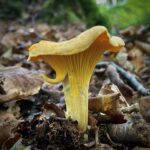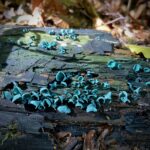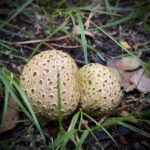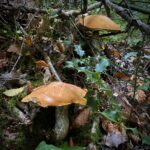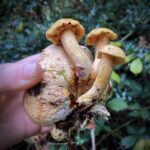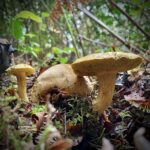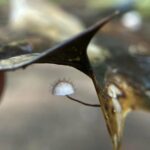October 8th 2023 – A walk on the wild side at The Great Plantation
It was a lovely sunny morning when we arrived and we soon had basecamp set up and the Kelly Kettles on so we could greet our guests with a brew. As the smell of woodsmoke drifted through the dappled light between the conifers we were soon joined by a group of enthusiastic adults and children including a mother and her son for whom this outing was a birthday present.
After a brief introduction with refreshments and the all important cakes we set off into the woods with Jo soon into fungi finding mode. Despite the recent dry weather there was still a good selection to be found including several lovely fly agaric and after a bit of searching the rare and unique violet webcaps. Near these we found two huge birch polypores (Fomitopsis betulina) often called the birch bracket, these amazing fungi have a range of medicinal uses applications including pain relief, wound dressing, antiseptic and cancer treatment. Numerous studies reveal a cocktail of compounds in birch polypore which appear to act synergistically and explain why it is the ultimate eco-plaster. Jo demonstrated how it can be used by cutting a plaster sized strip from the white underneath of the bracket. It is interesting to know that a 5,300 year old mummy called Otzi found by hikers in an alpine glacier had perfectly preserved pieces of this fungus attached to leather cords safely stowed in his bag. Clearly it was an important fungus whose properties have been known about for some time!
Further wandering revealed a variety of other fungal treasures including clusters of bovine boletes (Suillus bovinus) a very common find locally and named after their Jersey cow colour. Although edible the slimy cap and pores do not make it a very prized culinary delight!
Other finds included the Powdery Piggyback (Asterophora lycoperdoides). Piggybacks are a parasitic fungus that grow from decaying russula species, usually the Blackening Brittlegill. They’re an unusual fungi because the spores are produced on the top of the cap in a brown, powdery mass, and not from the gills. It was a very exciting find, as always!
Along with these there were several clusters of common inkcaps (Coprinus atramentarius). Inkcaps have a very short shelf life as they deliquesce; a delightful name for a not very delightful process where the mushroom decays and liquifies releasing a black ink which if mixed with a little water makes a great drawing ink. A number of Jo’s drawings have incorporated this ink to great effect.
Loaded with numerous fungal treasures we made our way back to base camp where I served my Foragers Brew which proved very popular. Made from rose hips, blackberries, sloes, yarrow and rosemary and sweetened with maple syrup this seasonal brew is rich in vitamin C and a great boost to the immune system.
We also set up a work table and demonstrated how to make leaf prints using watercolour paint and a spoon. Several folk had a go and were amazed with the results. An interesting and creative end to a lovely morning. A huge thanks to all that came and shared their time and enthusiasm with us.
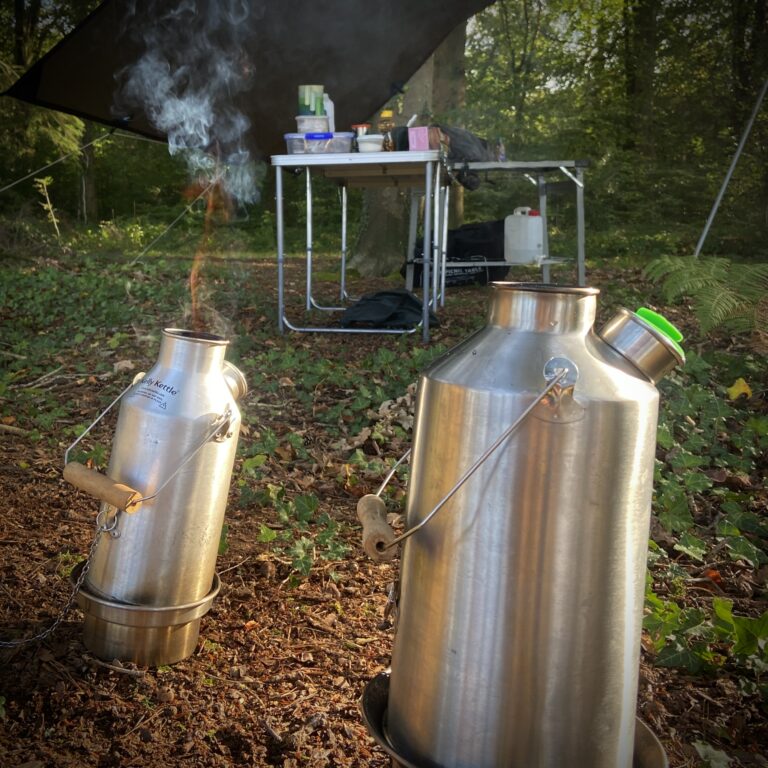
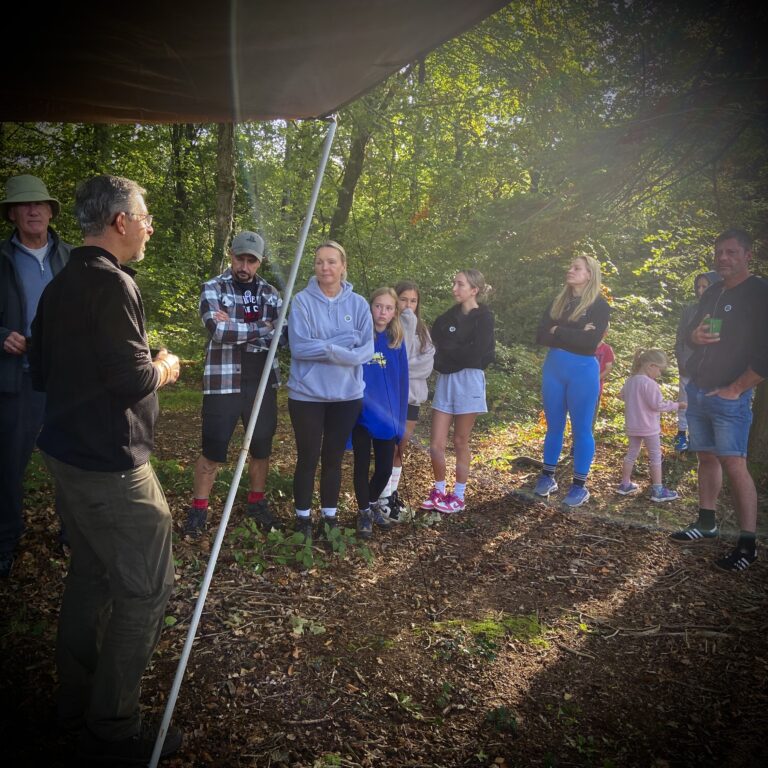
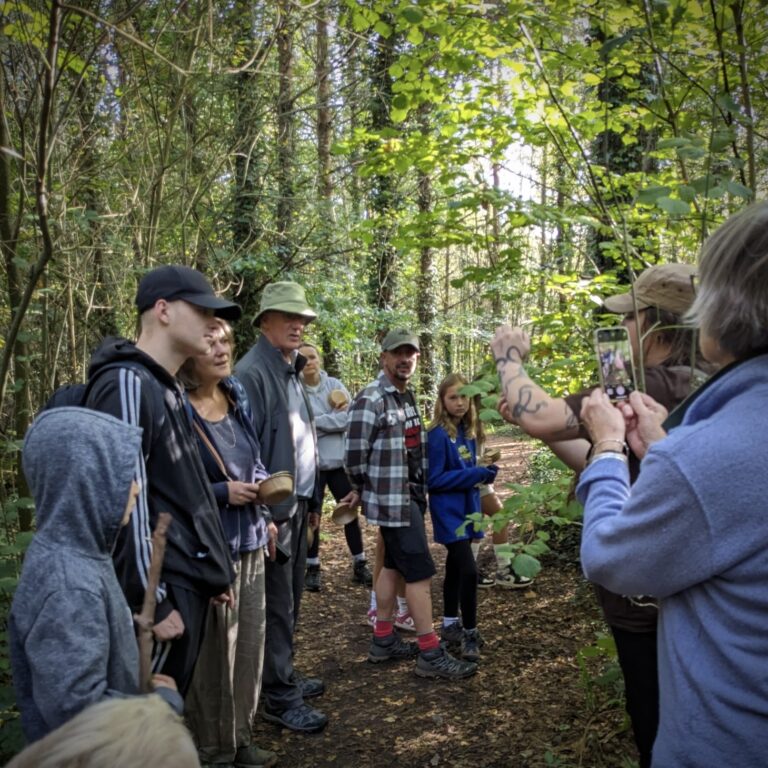
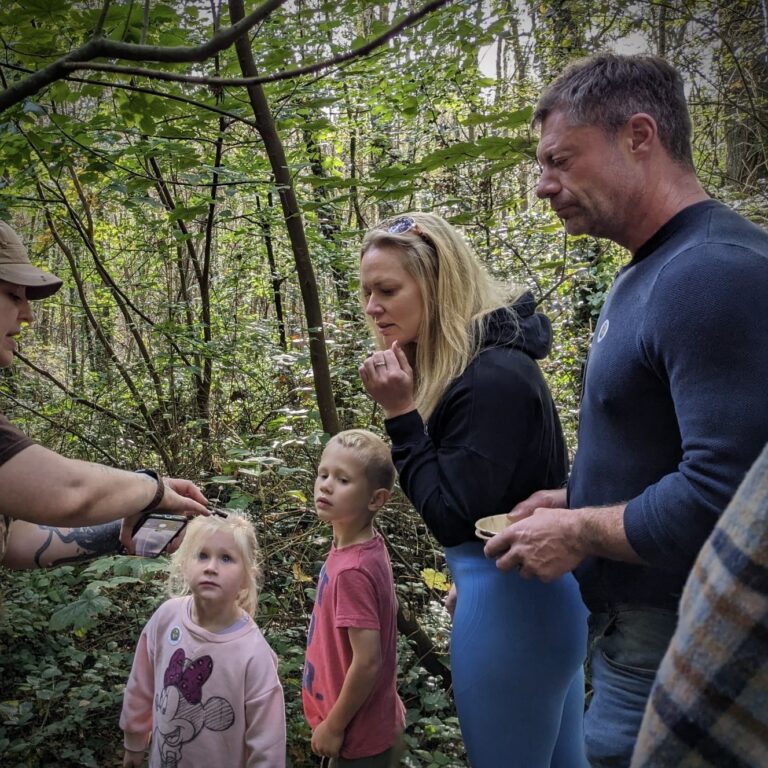
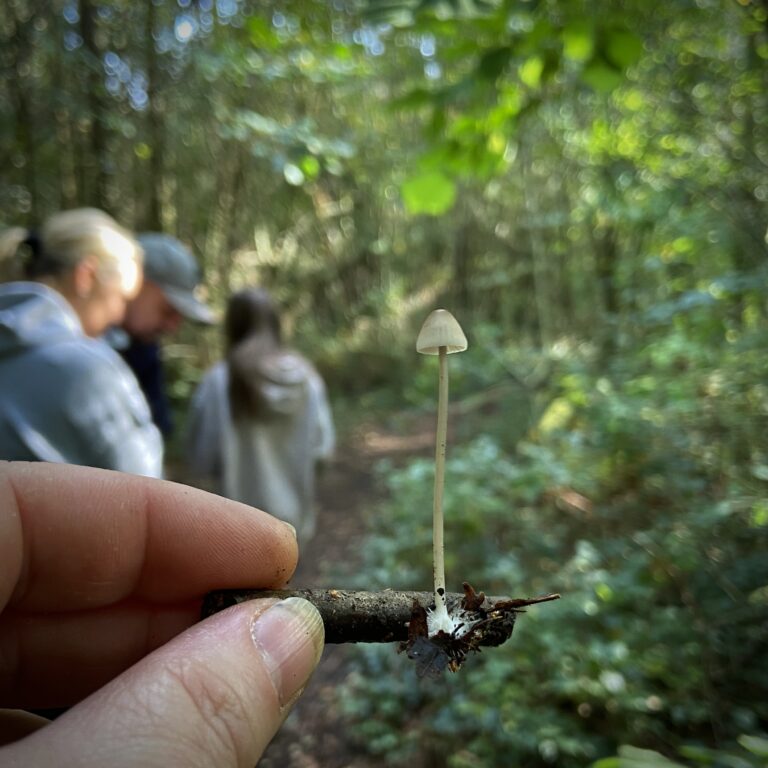
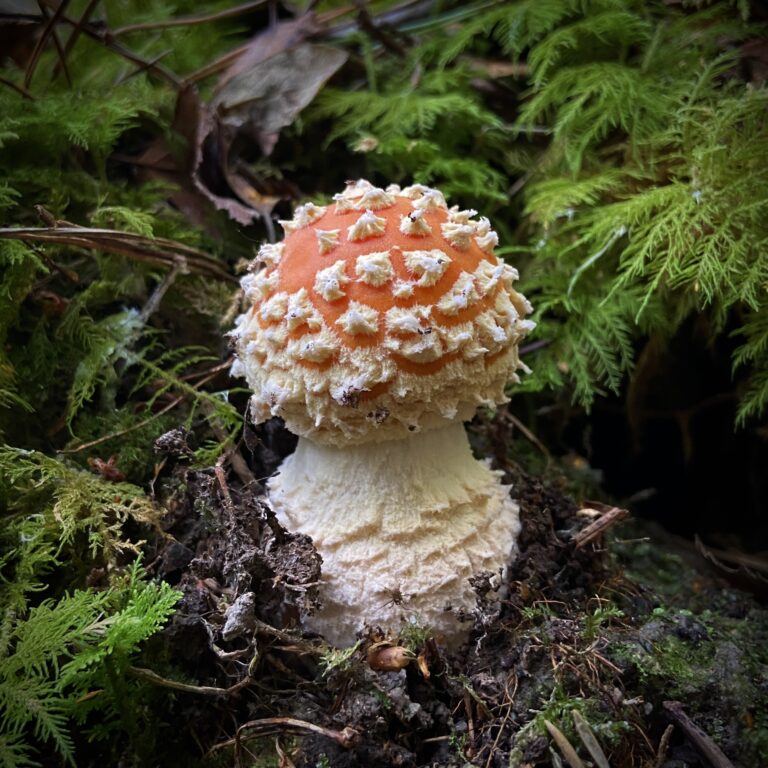
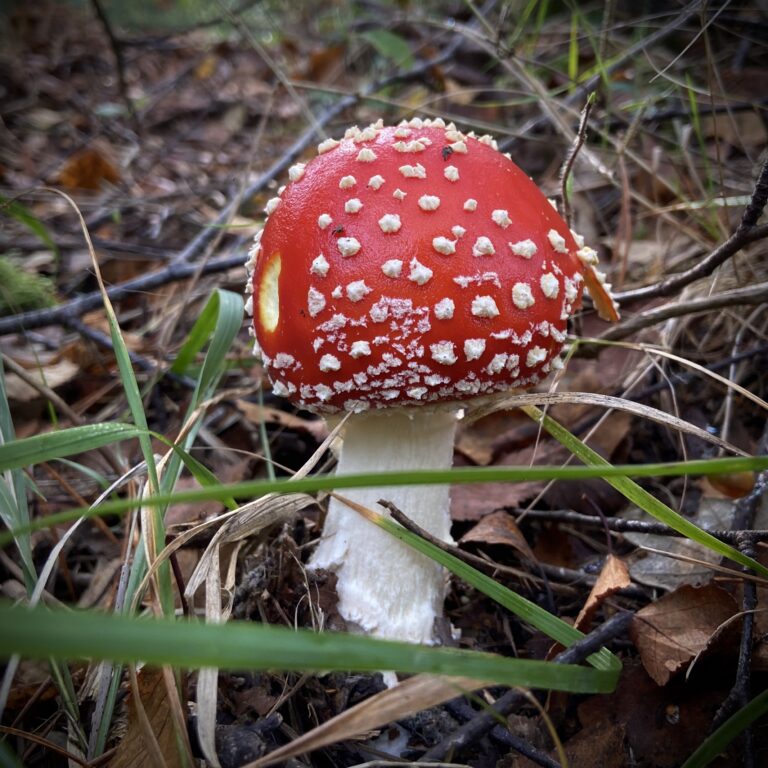
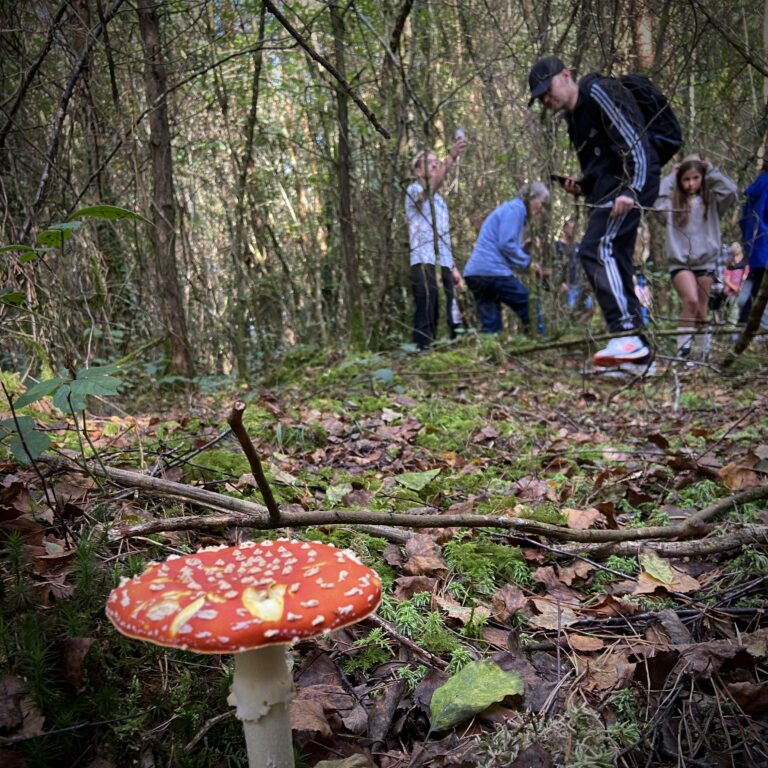
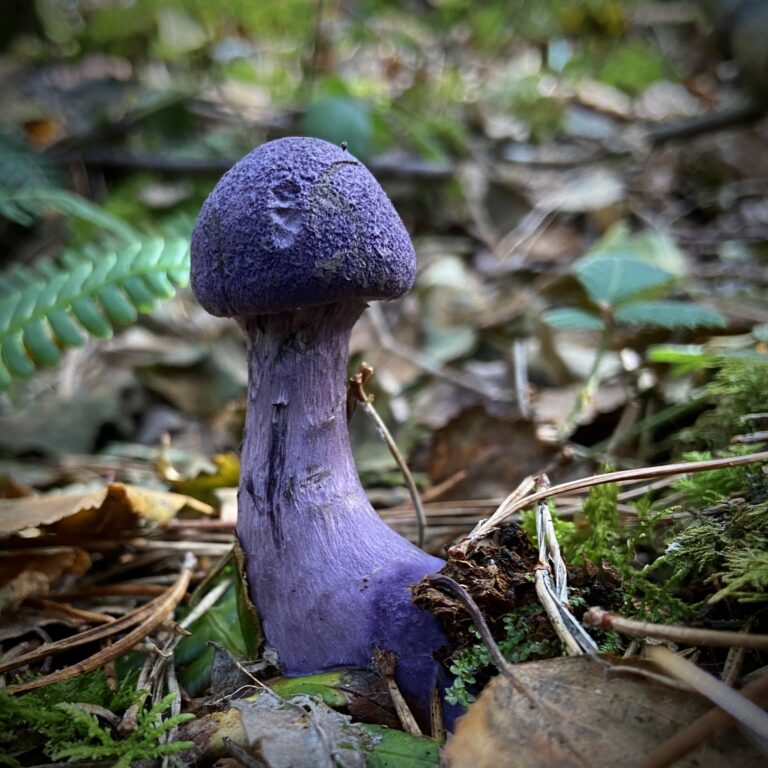
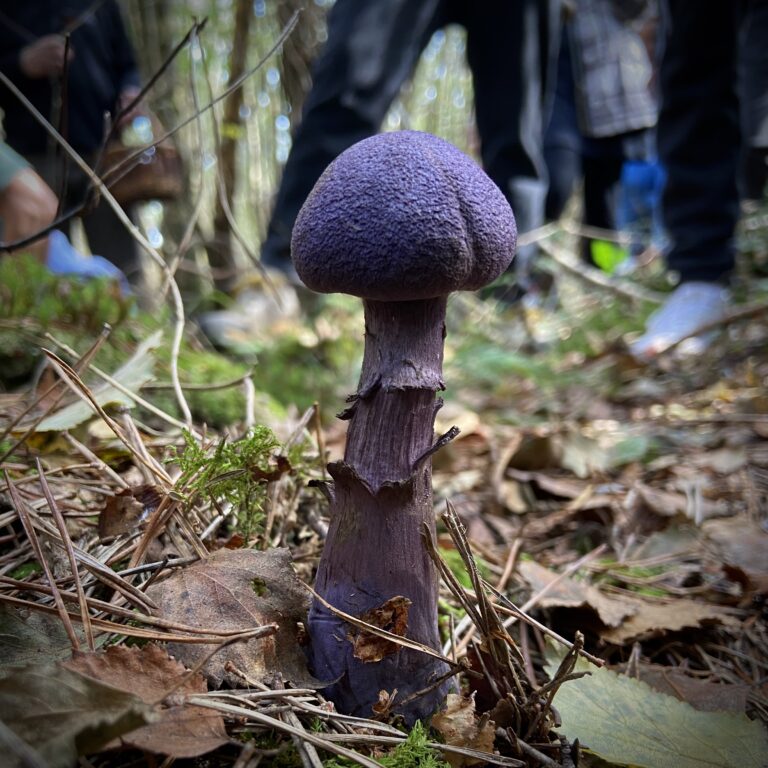
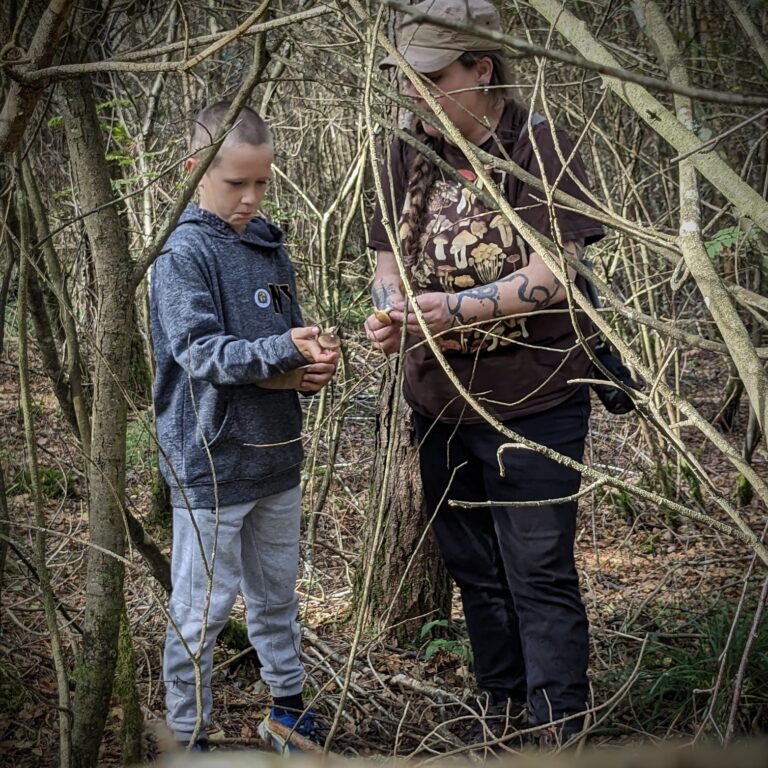
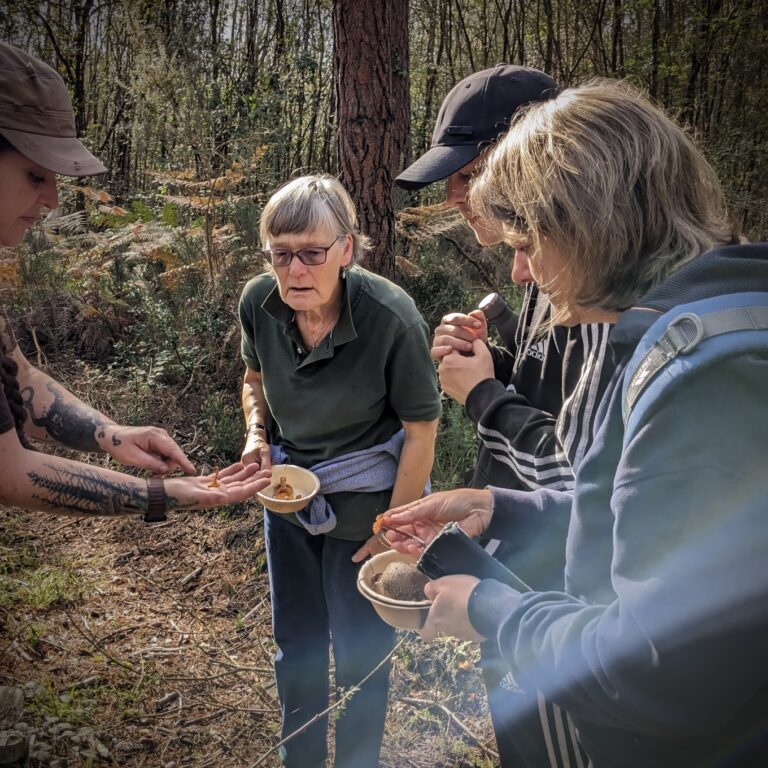
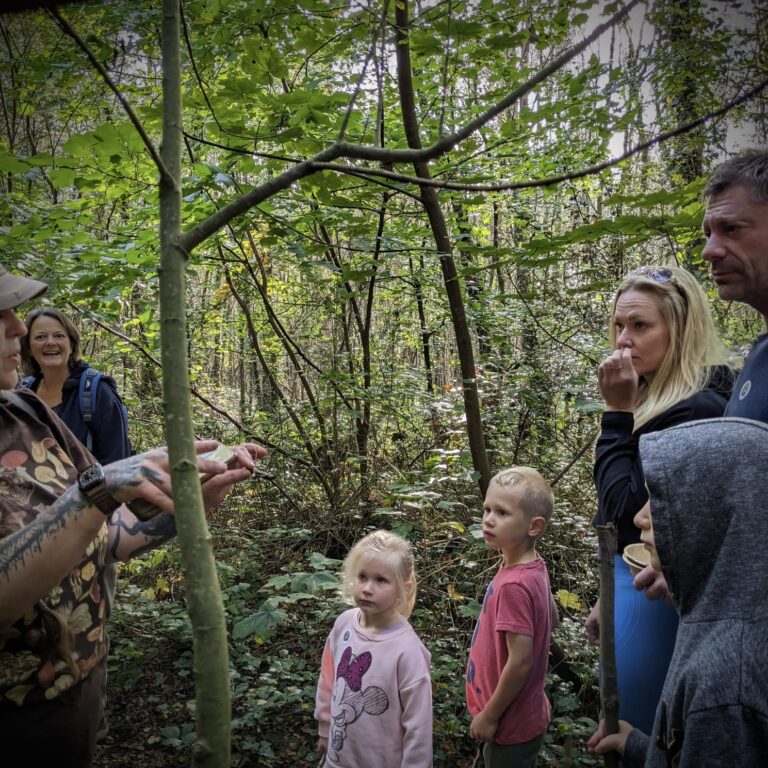
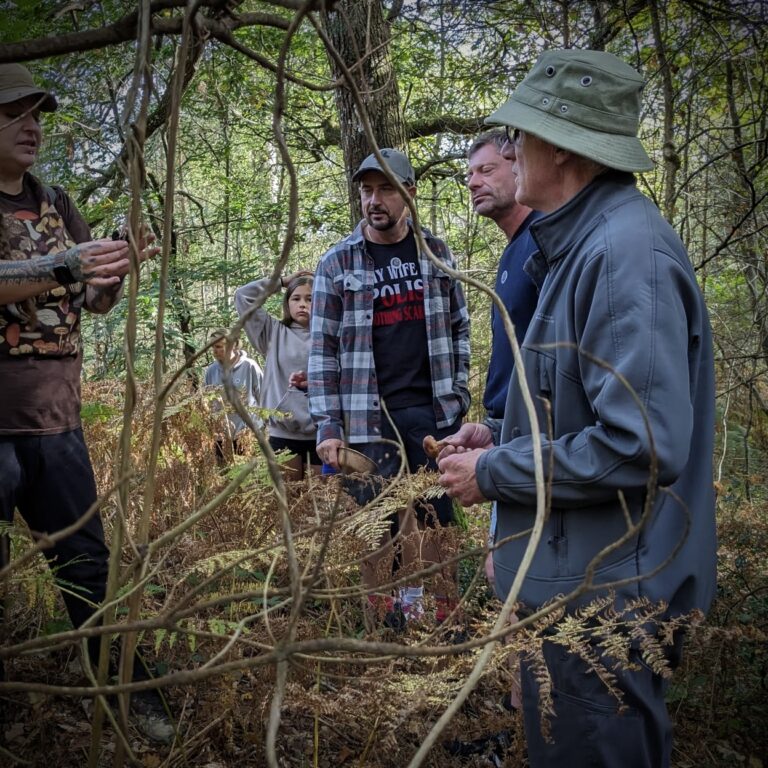
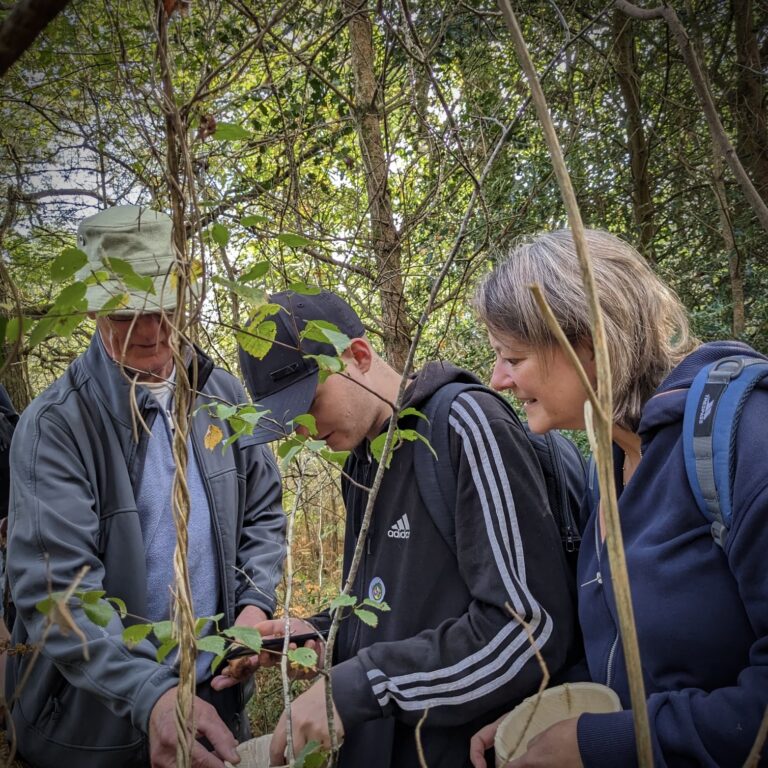
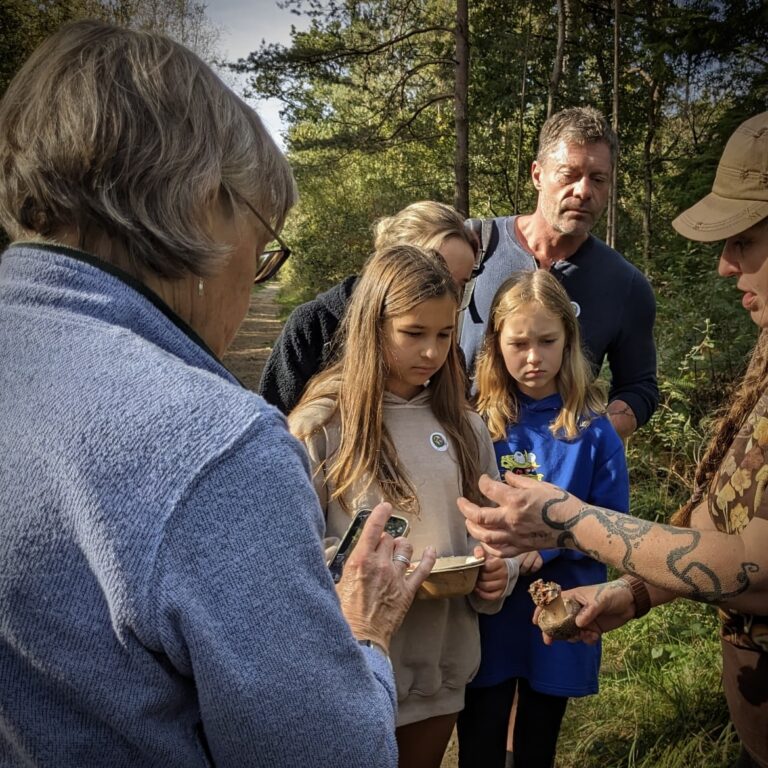
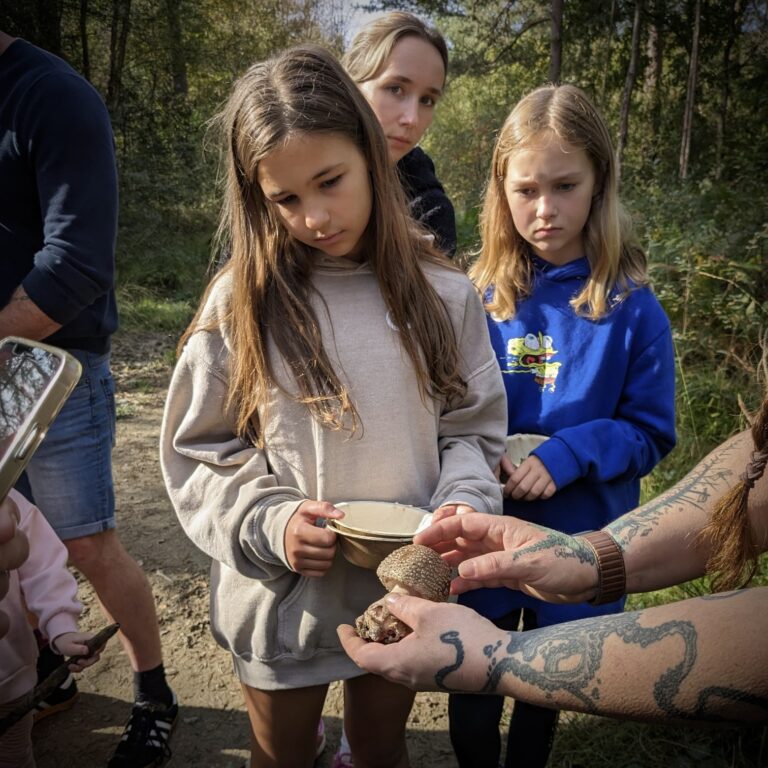
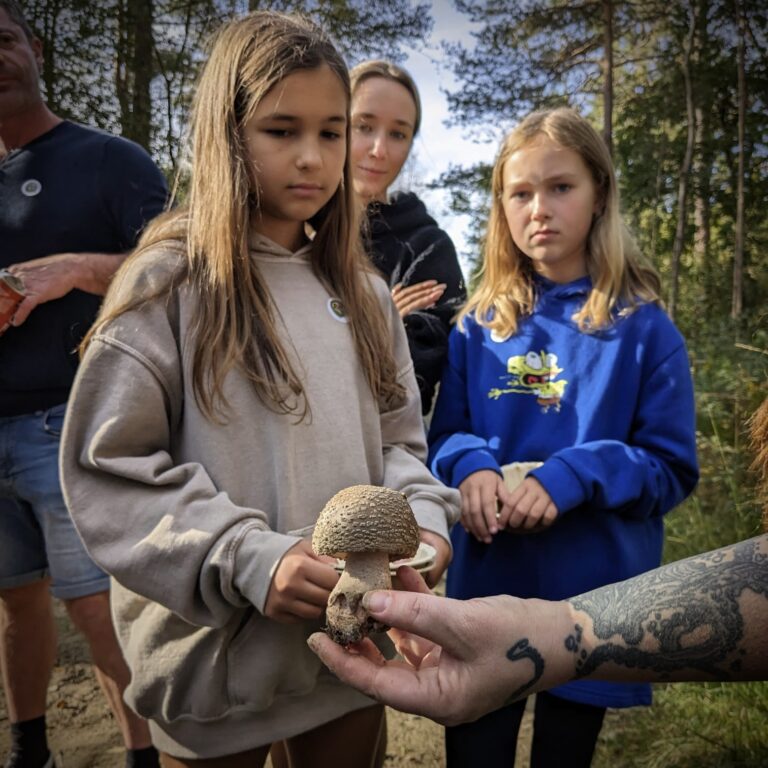
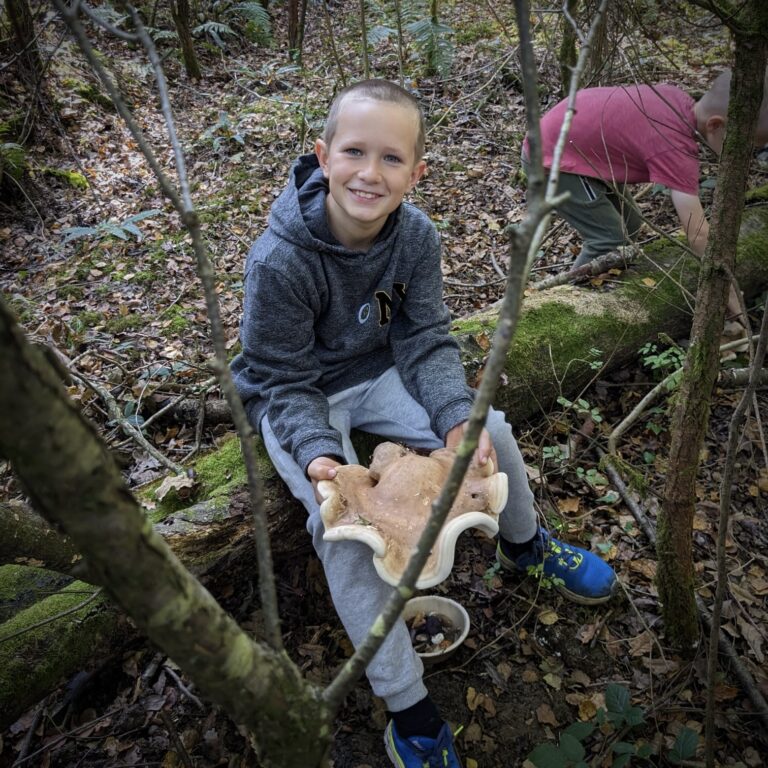
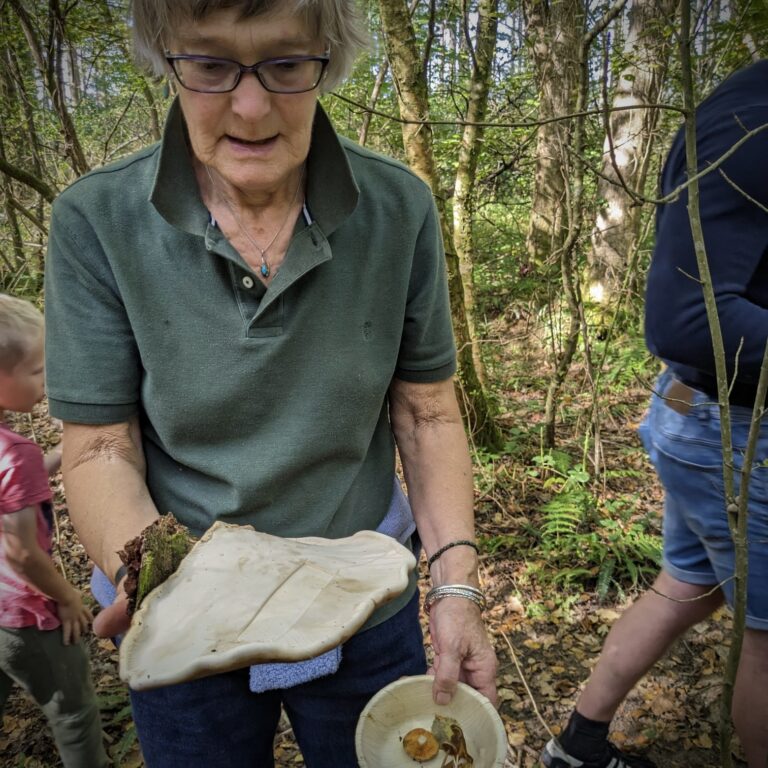
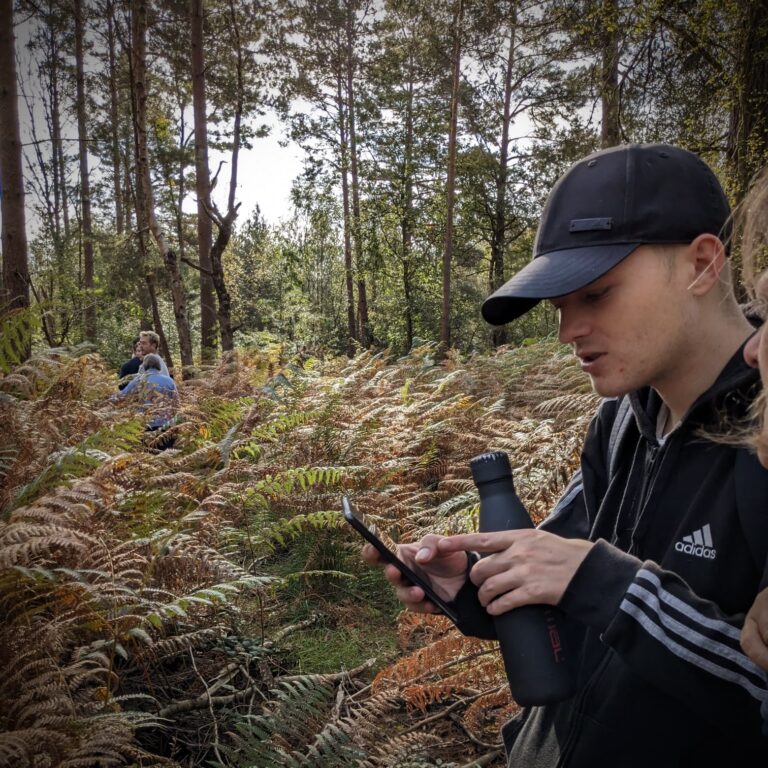
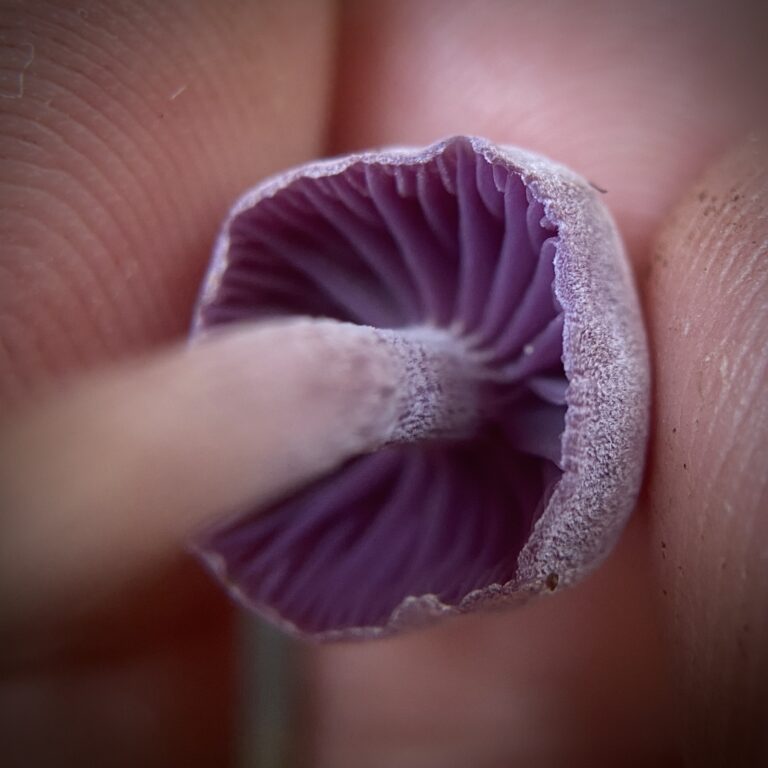
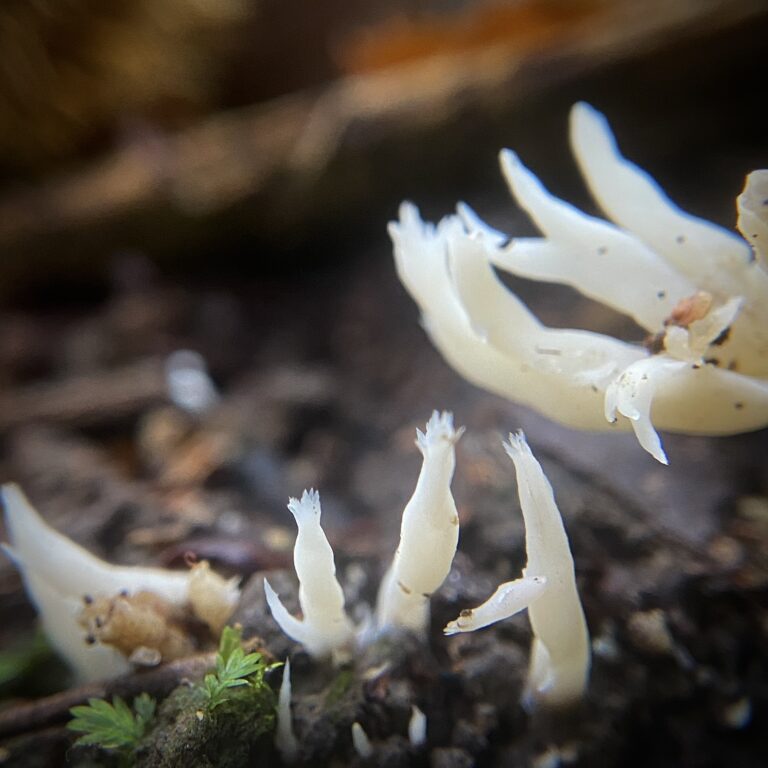
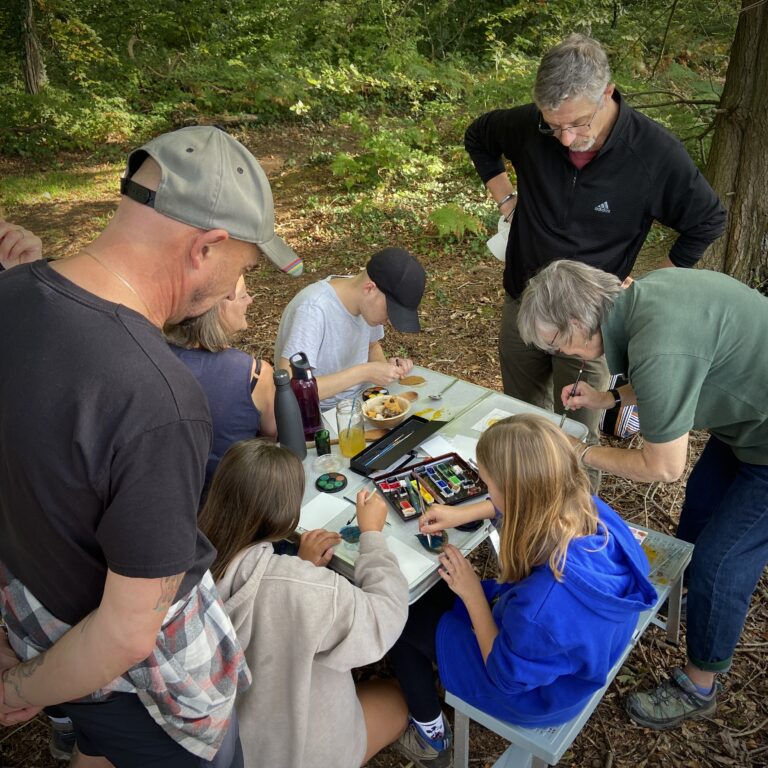
October 5th 2023 – Great Plantation Reccy
In preparation for our next walk this Sunday, Jo, Lizzie (my eldest daughter) and I took a walk on the wild side in the Great Plantation near Bovey. A mixed woodland bisected by the ancient Templer Way; a route used to get Granite from Haytor on Dartmoor to Teignmouth Docks.
After checking out the location for DevonWild basecamp we set off in search of mushrooms. Jo very soon had her eye in and showed us tiny ear pick fungi (Auriscalpium vulgare) growing from decaying pine cones. These amazing mushrooms have a spiky toothed appearance under the cap instead of gills. I was excited to find my own minute earpick before we headed deeper into the woods.
Amongst the young birch and beech our next discovery was a deep scarlet and magical looking fly agaric (Amanita muscaria) bursting from the leaf litter. As we scanned around suddenly we were surrounded by huge Penny Buns (Boletus edulis), as its species name suggests this is a sought after mushroom for the table. Called Ceps/King bolete or Porcini this mushroom can reach gargantuan proportions. For me and Lizzie this was our first encounter with these edible giants. As if this wasn’t exciting enough after a long search punctuated with numerous more Penny Buns, Brown Birch Boletes and moss covered stumps sprouting brilliant yellow/orange staghorns, Jo started her happy dance and showed us a ring of deeply coloured Violet Webcaps (Cortinarius violaceus). A rare find, this mushroom is a real beauty. Although described by some as edible it is not generally eaten but has 100X more iron in it than most other species. Even for Jo this was a first for this increasingly rare species and a great thing to share with those joining us on Sunday’s walk.
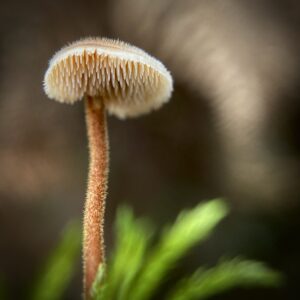
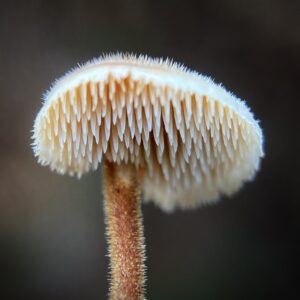
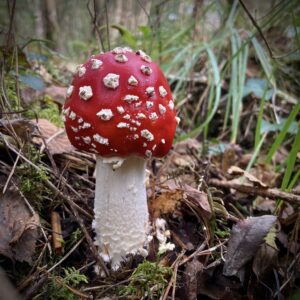
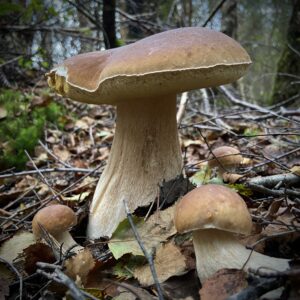
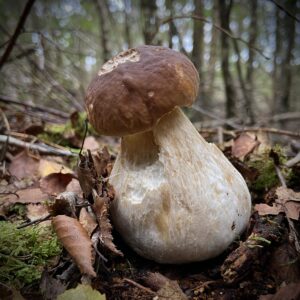
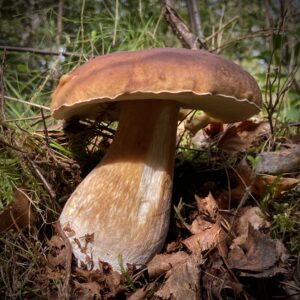
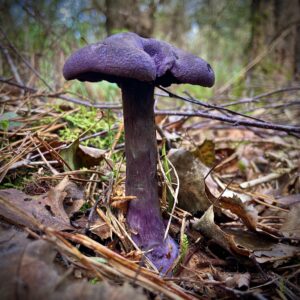
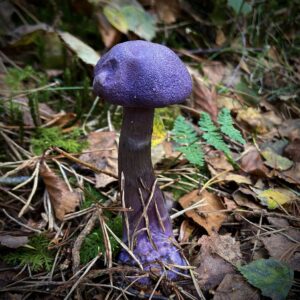
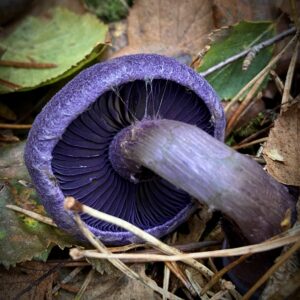
September 24th 2023 – Eordbirig DW launch
Jo and I arrived early in a squall of rain. Last week our original scheduled date we were forced to cancel with truly biblical deluges of rain closing all roads in and out of Teignmouth. Fortunately the rain quickly passed and with a tarp and table we soon had base camp set up and our resources laid out ready to welcome the friends and family joining us for this first walk.
Once folk were assembled Jo ran through the history of Eordbirig and discussed the do’s and dont’s for foraging. I talked about the background to the setting up of DevonWild and our hopes and aims for the future. Then it was time to grab a tray each and head off into the woods on a fungal foray. Jo was soon in her element showing people everything from gargantuan chanterelles to minute holly parachute and the amazing green logs studded with green elfcup. Nobody was unaffected by Jo’s infectious enthusiasm for her subject and the fascinating fungal facts that spilled from her lips. Soon folk were getting their eye in and trays were filling with a variety of specimens, with some even finding their own tiny holly parachutes.
Back at base camp it was time to reveal some hidden wonders like the bristly hairs (setae) covering the holly parachutes. With a selection of close up lenses and a binocular microscope people were amazed by the microscopic world revealed and were soon busy exploring and identifying their findings.
I shared some creative ideas for following up their visit like leaf monoprints using watercolour or gelliprinting with a variety of botanical material or found feathers.
All too soon it was time to say goodbye to the happy crew that had joined us on this, our first DevonWild walk on the wild side!
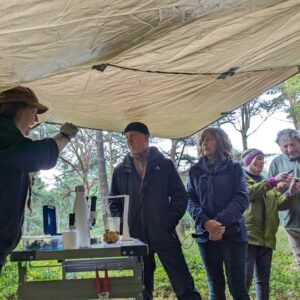
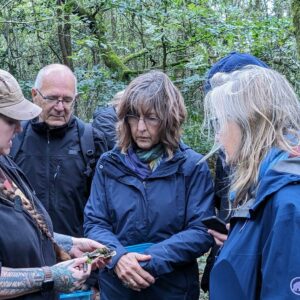
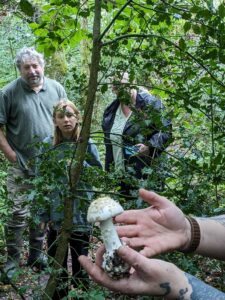
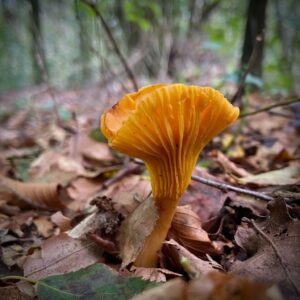
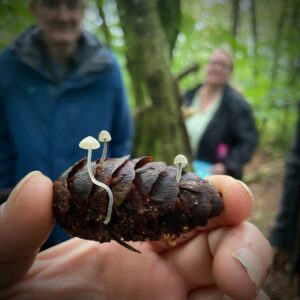
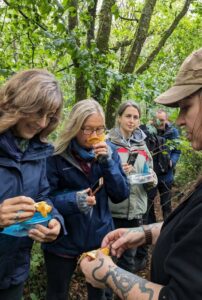
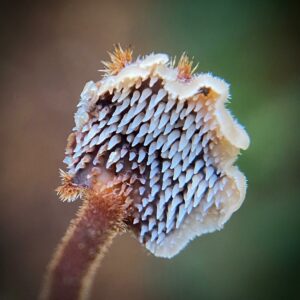
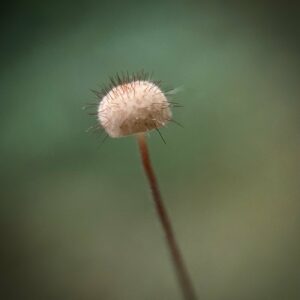
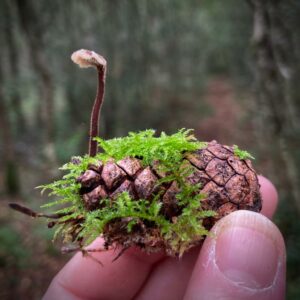
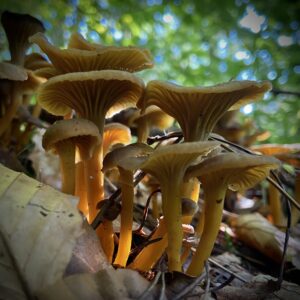
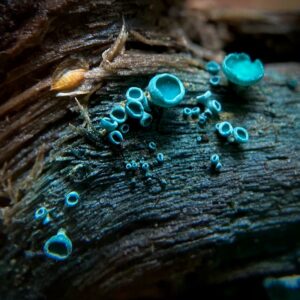
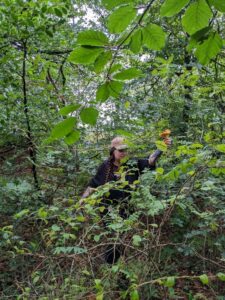
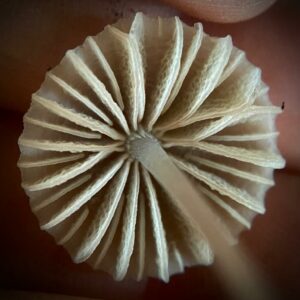
September 14th 2023 – Eordbirig Reccy
With our first workshop rapidly approaching Jo and I did a preparatory visit to Eordbirig this morning. This is a truly ancient site dated to the late Bronze/early Iron age, an univallate (single ringed) hill fort thought to have been used between 8-5 BC.
The first excitement for us was seeing the number of chanterelles in what is one of Jo’s favourite patches. Then for me finding a couple of huge orange birch boletes while hunting for the elusive holly parachute fungi. Jo took me on increasingly narrow paths to the edge of the site to find the teal coloured green elf cup colony busy turning a rotten log green throughout as both the mycelium and fruiting bodies are a deep teal colour, so cool!
The highlight of the trip was yet to come as Jo spotted a group of parasitic boletes growing on earthballs. These parasitic fungi are only ever found growing on earthballs and being the best example she had ever found led inevitably to a Jo happy dance! These will definitely be appearing in her follow up book to Secrets of a Devon Wood, which will focus entirely on fungi with perhaps a few slime moulds. The quality of her illustrations has to be seen to be believed. If you’re lucky enough to have a copy of her first book then her new book is going to be several notches up from there!
As we returned to the car we were privileged to see one more treasure as a treecreeper spiralled its way up a nearby birch tree. We returned home excited about our first walk this Sunday and all the amazing things we can share.
Meanwhile enjoy the photographs of our finds below.
